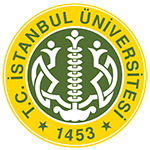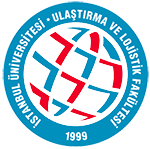
Ulaştırma ve Lojistik Kongreleri
- Türkçe
- Tam Metin
- 2018
TRA1 Düzey 2 Bölgesinde (Erzurum, Erzincan, Bayburt) İhracatın Yapısı, Sorunları ve Çözüm Önerileri
Abdullah Takım
Doç. Dr., Atatürk Üniversitesi, Erzurum, Türkiye
Fehim Bakırcı
Prof. Dr., Atatürk Üniversitesi, Erzurum, Türkiye
Yücel Naktiyok
Öğr. Gör., Atatürk Üniversitesi, Erzurum, Türkiye
Dışa açık büyüme modelini benimseyen bir ülke olarak Türkiye’de ihracat, gerek ülke ve gerekse bölgesel düzeyde ekonomik büyüme ve kalkınmanın temel itici gücünü oluşturmaktadır. Ne var ki ülke genelinde ihracat artışı sağlansa bile bu artış belirli bölgelerde yoğunlaşmakta, bölgesel düzeyde ihracat artışı sağlanamamaktadır. Bu durum TRA1 Düzey 2 Bölgesi (Erzurum, Erzincan, Bayburt) için de geçerliliğini korumaktadır. TRA1 Düzey 2 Bölgesi önemli ihracat pazarları olan komşu ülkelere yakın olmasına rağmen coğrafi yakınlık ihracata yansımamış, bölgeden komşu ülkelere yapılan ihracat yok denecek kadar düşük kalmıştır. Araştırma sonuçlarına göre bölgedeki firmaların dışa açıklık düzeyinin gelişmemiş olması, iç piyasaya yönelik üretim ve ticari faaliyetlerde bulunmaları, ihracat konusunda deneyim eksikliği, bölgesel teşvikler konusunda yeterince bilgi sahibi olunmaması, eğitim ve danışmanlık faaliyetlerinin yetersiz kalması, bölgedeki üniversitelerin potansiyelinin yeterince kullanılmamış olması bölgedeki ihracat artışını sınırlandırmaktadır. Yine kurumsal düzeyde işletmelerin azlığı, geleneksel işletmecilik anlayışının egemen olması, ihracatın KOBİ ölçeğinde firmalarca yapılması, yaygın bir ihracat kültürünün oluşmaması ve ihracatın büyük firmalara özgü bir faaliyet olarak algılanması bölge ihracatının gelişmesinin önünde temel engellerdir.Bu çalışmada TRA1 Düzey 2 Bölgesinde (Erzurum, Erzincan, Bayburt) ihracatın yapısı ve sorunları tartışılmakta ve bölümün sonunda ise çözüm önerileri sunulmaktadır.
Anahtar Kelimeler: Türkiye, İhracat, Bölge, TRA1 Bölgesi
Exporting Structure, Problems and Solution Proposals In TRA1 Nuts II Region of Turkey (Erzurum, Erzincan, Bayburt)
Because of Turkey that is a country which adopts the external growth model, both in the country level as well as in the regional level that exports constitute the main driving force of economic growth and development. However, even if export increases are made throughout the country, this increase is concentrated in certain regions, and there is no increase in exports at regional level. This situation is also valid for the TRA1 NUTS II Region (Erzurum, Erzincan, Bayburt) of Turkey. Although the TRA1 NUTS II Region is close to neighboring countries with significant export markets, geographical proximity is not reflected in exports and furthermore the export to the neighboring countries from the region is too low to be called. According to the results of the research, the lack of openness level of the firms in the region, production and commercial activities aimed at the domestic market, lack of experience in exporting, lack of knowledge about regional incentives, inadequacy of training and consultancy activities and insufficient use of the potential of the universities in the region limits the increase in exports in the region. Again, the lack of enterprise-level enterprises, the dominance of traditional business approach, the fact that companies are made on the scale of SMEs, the absence of a widespread export culture, and the perception of exports as a peculiar business activity are the main obstacles to the development of regional exports.In this study, the structure and problems of export in TRA1 NUTS II Region (Erzurum, Erzincan, Bayburt) are discussed and solution proposal is presented at the end of the chapter.
Keywords: Turkey, TRA1 NUTS II Region, Region, Export

IV. International Caucasus-Central Asia Foreign Trade and Logistics Congress Proceeding Book
E-ISBN: 978-605-68889-0-8
Sayfa: 868-878

Bu çalışma, kullanan kişilere orjinal çalışmadan alıntı yaptıkları sürece, çalışmayı dağıtma, değiştirme ve üzerine çalışma hakkı tanıyan Attribution 4.0 International (CC BY 4.0) lisansı ile lisanslanmıştır.
İletişim
İstanbul Üniversitesi Ulaştırma ve Lojistik Fakültesi
İ.Ü. Avcılar Kampüsü 34320 Avcılar/İstanbul
ulk@istanbul.edu.tr
+ 90 (212) 440 00 00 - 19200


